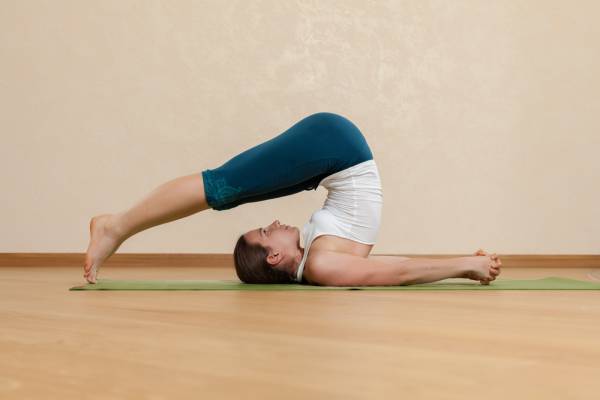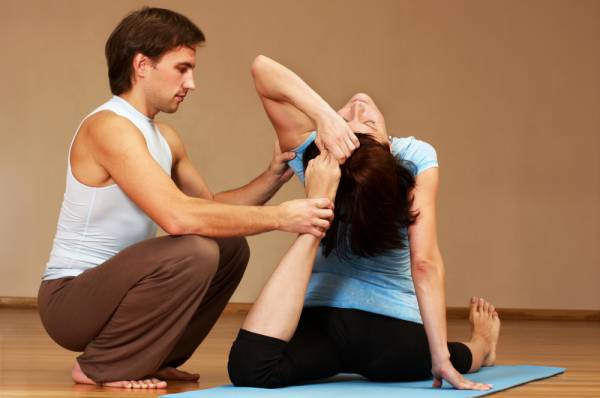When I was eighteen years old, I stepped out of a booth at a ‘50s diner with a sleepy foot, took two steps, crumpled to the floor, and then hid under a cart containing dozens of kids’ meal containers shaped like ‘57 Chevys.
Not my sexiest injury, but crap happens. In this case, crap kept me on crutches or in a cast from graduation to the end of my first collegiate year. My left ankle still looks and feels different from my right this minute.
An Unpopular Topic
Such a big event. How could I have known that it was coming? In hindsight, I probably shouldn’t have been so cavalier about walking on a foot that was asleep. I certainly knew about the powers of circulation by that point in my life, but I also had to pee so one need outweighed another. (“Don’t wait so long to pee that you have to walk on a comatose foot.” Lesson learned – the hard way.)
“When we don’t talk about injury in class, students don’t mention it when it occurs, and the feedback loop breaks down.”
Injury is generally not a favorite topic in yoga. Many people see it as inherently negative. In some cases, I’ve been specifically asked not to even utter the word when teaching (“it’s not good for marketing”). The problem with resisting it is that it persists. When we don’t talk about injury in class, students don’t mention it when it occurs, and the feedback loop breaks down.
It’s no longer a surprise to me when I run into people at a restaurant and they say, “I hurt my back in yoga” and they don’t want to ever do it – get hurt or do yoga – again. The sad part about this state of affairs is that yoga can really heal us. You could argue that yoga is a complete process of healing. So if that’s the case, why do people get hurt on their mats?

That question has a lot of easy answers: aggressive movement, excessive force from themselves or the teacher, the room was too hot, the room was too cold, a preexisting injury, misunderstanding of alignment, lack of experience, lack of information from the teacher, wrong class level, ego, not enough strength, too much flexibility, and so on.
“What if we quit thinking of why we are getting hurt, which is usually in hindsight anyway, and started thinking about obeying the road signs that tell us we are moving into pain?”
Only so many of these things can be mitigated in every class or even in a private session. But what if we quit thinking of why we are getting hurt, which is usually in hindsight anyway, and started thinking about obeying the road signs that tell us we are moving into pain? In this way, we might be able to create some real change.
Here are some signs I’ve seen over the years that someone might be headed for a cart of ‘57 Chevys:
Soreness
If you practice yoga once a week, you’re probably going to be sore. It’s not frequent enough for your body to adjust. If you practice every day or every other day and you are still sore every time, you are likely working too hard. The body needs time to recover between intense bouts of activity and yoga should arguably be a part of that recovery plan, not a challenge to it.
Acute Joint Pain
Achiness around a joint or joints can be a sign of strain in the tissues that support the joint. This commonly happens in yoga with overstretching or misalignment. The tough part about listening to this one is that, like soreness, it is often a next day sign. We wake up the next day and think, “My back is stiff. I should do my yoga,” when we might be better served by wondering if the yoga itself contributed to the stiffness.

Headaches
Many styles of flow-based yoga place a large emphasis on supporting the body with the arms. Many yogis don’t have experience doing this prior to doing yoga. When someone goes from zero to chaturanga, they often have to compensate with the muscles of the neck and upper shoulder. Tightness and overuse in those muscles can create tension headaches that are seemingly unending.
Increasing Asymmetry
Asymmetry is an easy one. It is a clear predictor of future injury and rather easy to see. Yoga should bring the body into balance. If the yoga you practice is resulting in changes to one side of the body but not the other, take some time to consider why. Are you working harder on one side? Are you favoring your more flexible side? If you can’t see why, get your teacher to see you.
Increasing Rigidity
Sometimes an area of the body that used to be supple and mobile begins to tighten. This can lead to problems in the nearby tissue, as it will attempt to pick up the slack by increasing mobility it may or may not have. This often occurs in the junction between the lumbar and thoracic spine. The rib cage and thoracic spine become less mobile over time, often due to breathing patterns, and yet the individual still performs the same deep backbends, thereby putting this junction at greater risk.
Hypermobility
If you are already really flexible in an area of the body, it is best to protect it – to bend less and tone more. This is easier said than done. Being pulled back and slowing down can be frustrating and uncomfortable; however, if the supports for the bones continue to loosen, the bones will shift into patterns of poor, and potentially painful, alignment.

Increased Weakness or Inability to Gain Strength
Active asana is just that – active. The body responds to the stress placed upon it. If the stresses are too large, the body can break down. If the stresses are too small, the body will not build up. There are a lot of different anatomical and physiological reasons for a loss of strength despite applied effort. Inquiry into the why is important and temporary reduction in risky weight-bearing postures may reduce potential injury.
Fatigue
You practice every day. You’re exhausted every day. Are they related? Maybe, maybe not. If your practice leaves you without an ounce of energy to spare, then you have nothing left in the reserves to keep you stable and strong in end-of-class inversions. Let your energy level guide your effort, not the other way around.
Anger
All kinds of emotions come up in a yoga class, including anger. Be on the look out for anger that develops during class and continues after. Sometimes it comes from overuse of core or pelvic floor muscles, gripping, or forceful attitudes. Forcefulness and tension are red flags for future yoga aches and pains.
Read the Signs
Just like on the road, signs only work if you are paying attention. If you aren’t, you’ll miss your turn and have to backtrack. Take the time to tell your teacher if you are experiencing any of these things so he or she can keep you moving in the right direction.
You Might Also Enjoy:
- 6 Tips for an Injury Free Yoga Class
- Low Back or Leg Injury? Stay Active With Modified Sun Salutations
- Yoga Is for All Athletes: Start Your Yoga Practice Today
- What’s New on Breaking Muscle Today
Photos courtesy of Shutterstock.






